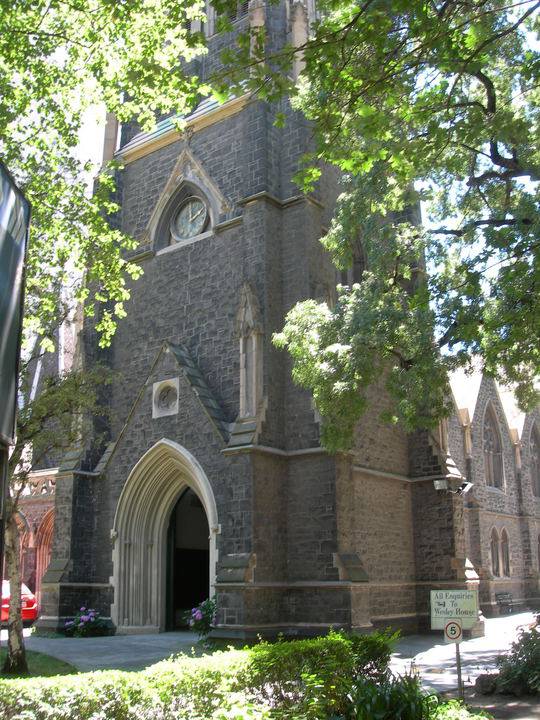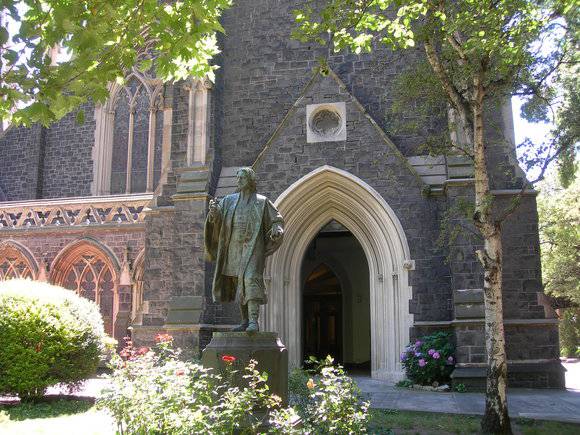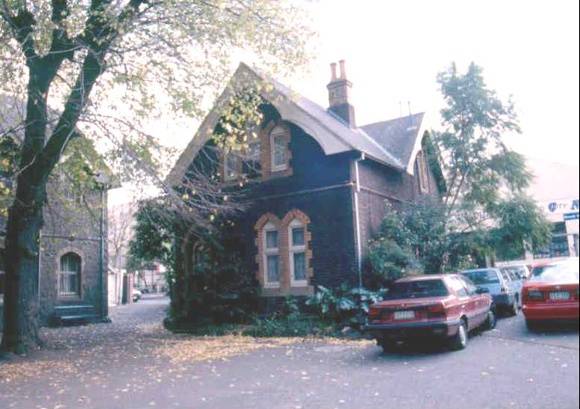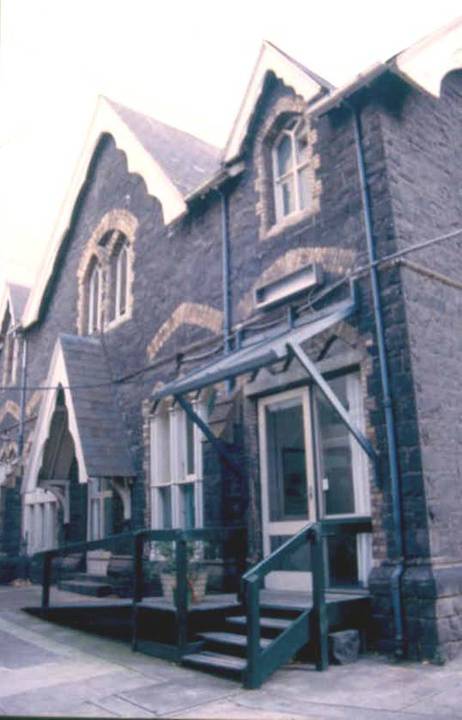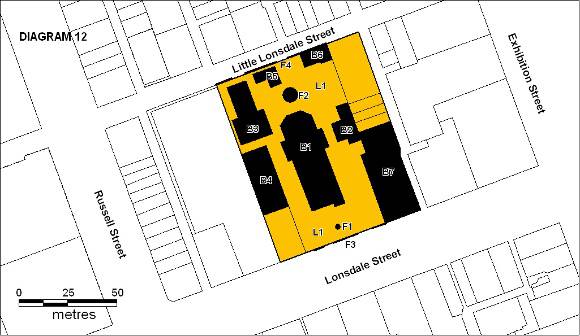| Back to search results » | Back to search page » |
|
WESLEY CHURCH COMPLEX
Other NamesPRINCESS MARY CLUB , NICHOLAS HALL Location118-148 LONSDALE STREET AND 117-147 LITTLE LONSDALE STREET MELBOURNE, MELBOURNE CITY
File Number11/003735LevelRegistered |
|
Statement of Significance
What is significant?
The Wesley Church and Wesley Mission Victoria Complex in Lonsdale Street consists of ten buildings including: The Church (1858); The Manse (1859); and The School House (1859) all designed by Joseph Reed; a Caretakers Cottage (1914); the Princess Mary Club (1926), designed by AS Eggleston and Nicholas Hall (1938), designed by Harry Norris. The North Boundary wall along Little Lonsdale St (1869) incorporates remnants of a stables and also includes a section which was rebuilt in 1914 during the construction of the Caretakers Cottage. The Lonsdale Street boundary is defined by a set of basalt central gateposts, the basalt plinths of a cast iron palisade fence and the bases of a smaller set of gates which led to the Manse(1873). Standing in the forecourt of the church is a bronze statue of John Wesley by Paul Montford (1936). The Methodist Church has had a presence in Melbourne since the beginning of European occupation and the Wesley Church has been at this site since 1858 having moved from a site in Collins Street. The Wesley Church complex has been the core of Wesleyan Methodism in Victoria since this time and the headquarters of the Wesley Mission Victoria since 1893.
How is it significant?
The Wesley Church and Wesley Mission Victoria Complex is of historical, architectural and social significance to the State of Victoria.
Why is it significant?
The Wesley Church complex is of architectural and historical significance as a complete and substantial collection of related mid to late nineteenth and early twentieth century ecclesiastical buildings.
The principal group of 1858-59 buildings (Church, School House and Manse) are of architectural significance as the earliest intact church complex in the state. Conceived and completed as a single building project, the 1858-59 buildings are also architecturally significant as an early and essentially intact group of ecclesiastical buildings designed in a correct Gothic Revival Style. This group of buildings is of architectural significance as being the work of noted nineteenth century Melbourne architect Joseph Reed. The School House is of architectural significance as the only known Denominational school in Victoria designed by an architect.
The Wesley church is of architectural significance as an early and highly accomplished example of Gothic Revival styling and for the unusual combination of a gallery on all sides with a cruciform floor plan. The spire is the oldest surviving, and is believed to be the first, spire built in Victoria. The spire is also significant as having been a major landmark in nineteenth century Melbourne.
The Wesley Church is of architectural significance, representing the acceptance of the Gothic Revival style into the mainstream of Wesleyan and other non-conformist churches.
Nicholas Hall is of architectural significance as a fine and intact example of a church hall designed in a Moderne style and as the work of prominent interwar architect Harry Norris.
The Wesley Church complex is of historical significance as a major focus for Methodists in Victoria. The church itself has a symbolic position and prominence in the history of the Wesleyan Methodist Church in Victoria.
The site and complex are of social and historical significance for their long association with various welfare initiatives and programs since the 1850s, in particular those of the Wesley Mission Victoria.
The Wesley Church site is of historical significance for its associations with A M & G R Nicholas, founders of the Nicholas Chemical Manufacturing Company who had a longstanding philanthropic association with the Wesley Church.
The Princess Mary Club is of historical significance in the history of women's employment in Victoria as a rare surviving example of a 1920s hostel for young women coming to the city to work and study, enabling the greater inclusion of women in the workforce.
The School House is of historical significance as a representative example of a nineteenth century denominational school.
The School House is of social significance as housing the offices of the Wesley Mission Victoria when it was established in 1893.
Group
Religion
Category
Church


